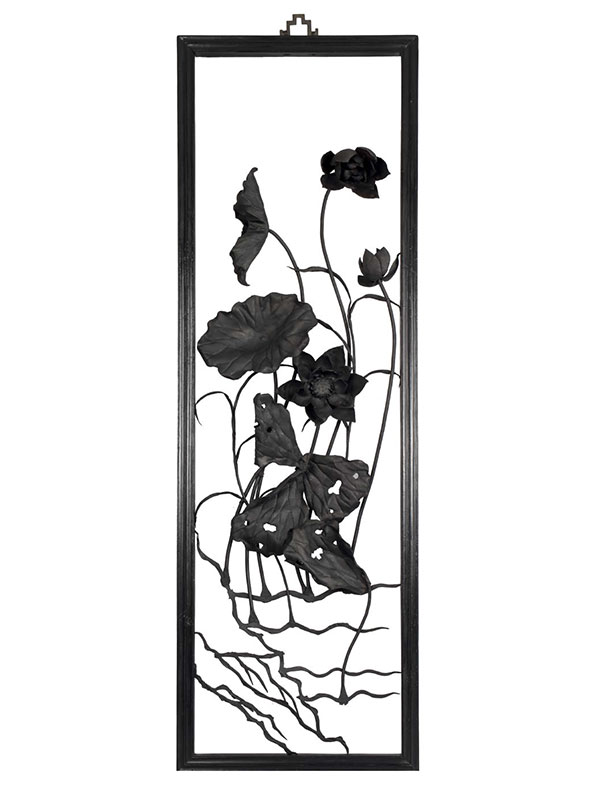Iron painting of a lotus pond
A large iron painting depicting branches of flowering lotuses, issuing from a lotus pond, with big leaves. The plants are made of a multitude of wrought-iron elements, which are crafted individually and bolted together. The painting is contained within a rectangular hardwood frame.
The contrast between the dark iron and the lighter background results in a striking two-dimensional quality, equivalent to ink painting. The birth of tiehua was attributed to a Wuhu blacksmith, Tang Peng (also known as Tang Tien-chi, 1644 – 1722), who was inspired by Chinese ink paintings depicting landscapes by the painter Xiao Yun-Cong (1596 – 1673). [1] It was not until the 18th century that the art of tiehua was noticed by scholars in Beijing, who started to admire their beauty in poems. The importance of the aquatic lotus (hehua or lianhua in Chinese) as a symbol of Buddhism, helped make it one of the most common and central flowers in Chinese art. [2] Stylistically and in terms of size, this iron painting closely resembles a set of four iron paintings from the Shanghai Museum, which were included in the exhibition The Chinese Scholar’s Studio: Artistic Life in the Late Ming Period in 1987. [3] Four comparable iron paintings, similarly depicting flowers or plant motifs, are in the John Reilly Jr. collection and illustrated in The Romance of Chinese Art. [4]
Provenance: collection of Hugh Malcolm (1886 – 1961); thence by descent.
- Jenyns, R.S. and Watson, W. Chinese Art, vol. II, Phaidon, Oxford, 1980, p.104
- Welch, P. B. Chinese Art – A Guide to Motifs and Visual Imagery, Tuttle Publishing, Singapore, 2012, p. 27
- Li, C. T. and Watt, J.C.Y. eds, The Chinese Scholar’s Studio: Artistic Life in the Late Ming Period-An Exhibition from the Shanghai Museum, Thames and Hudson, New York, 1987, no. 68, pp. 120-121
- Hobson, R. L. The Romance of Chinese Art, 1929, Garden City Publishing, New York, pl. 46-6, p. 163

